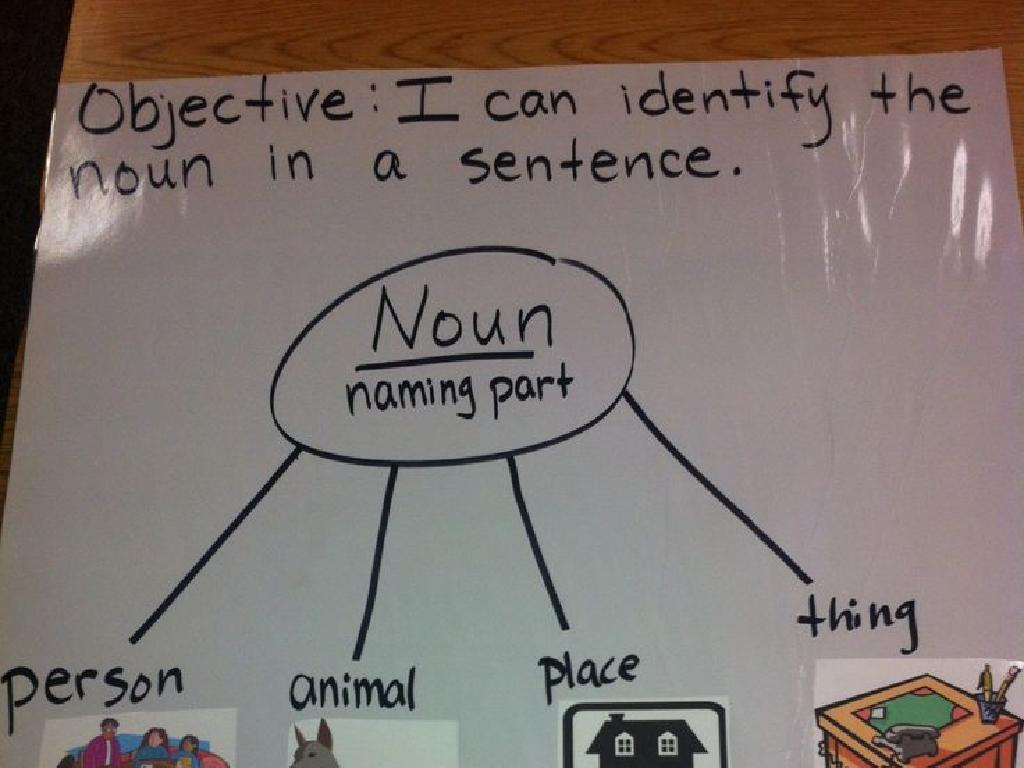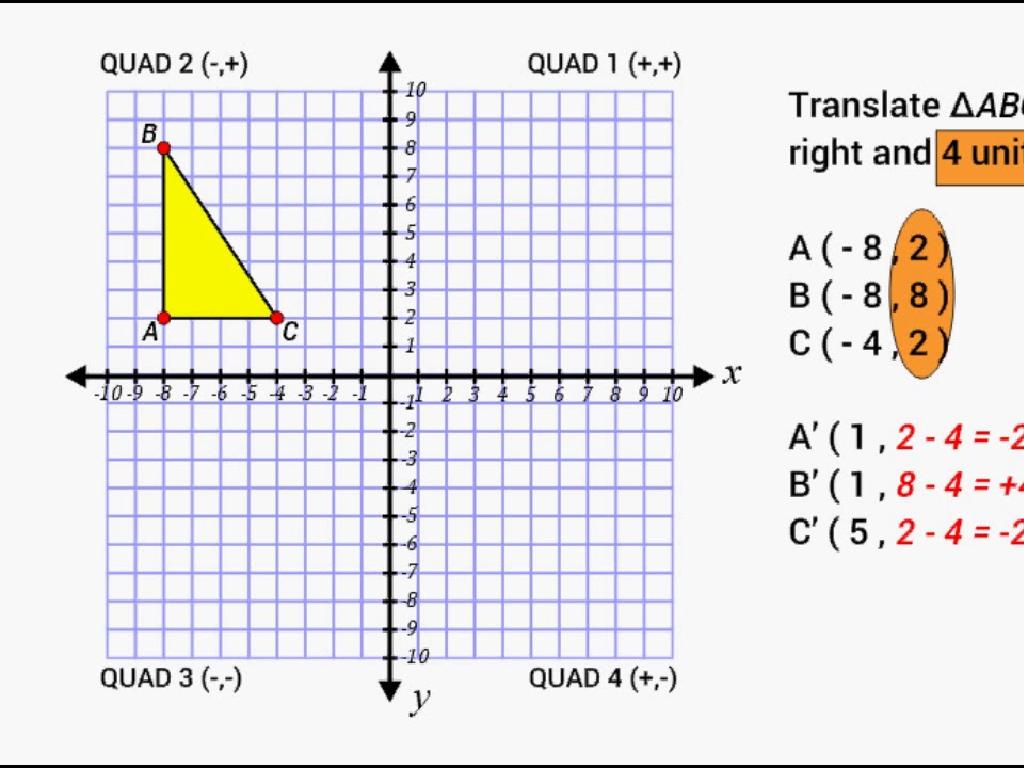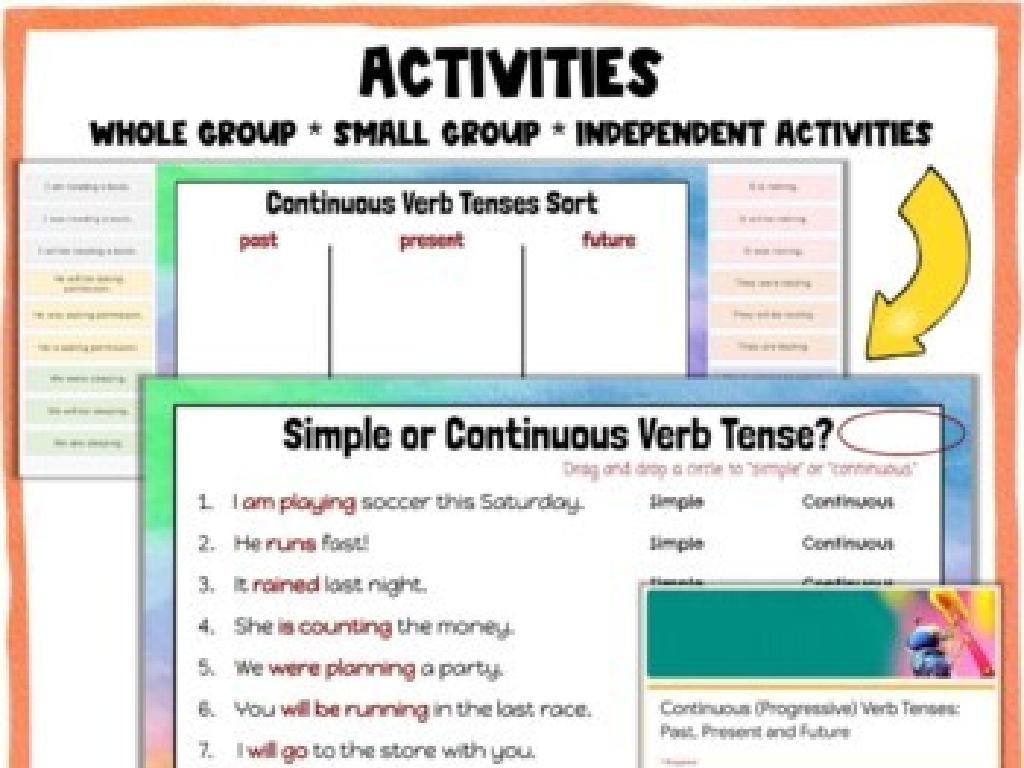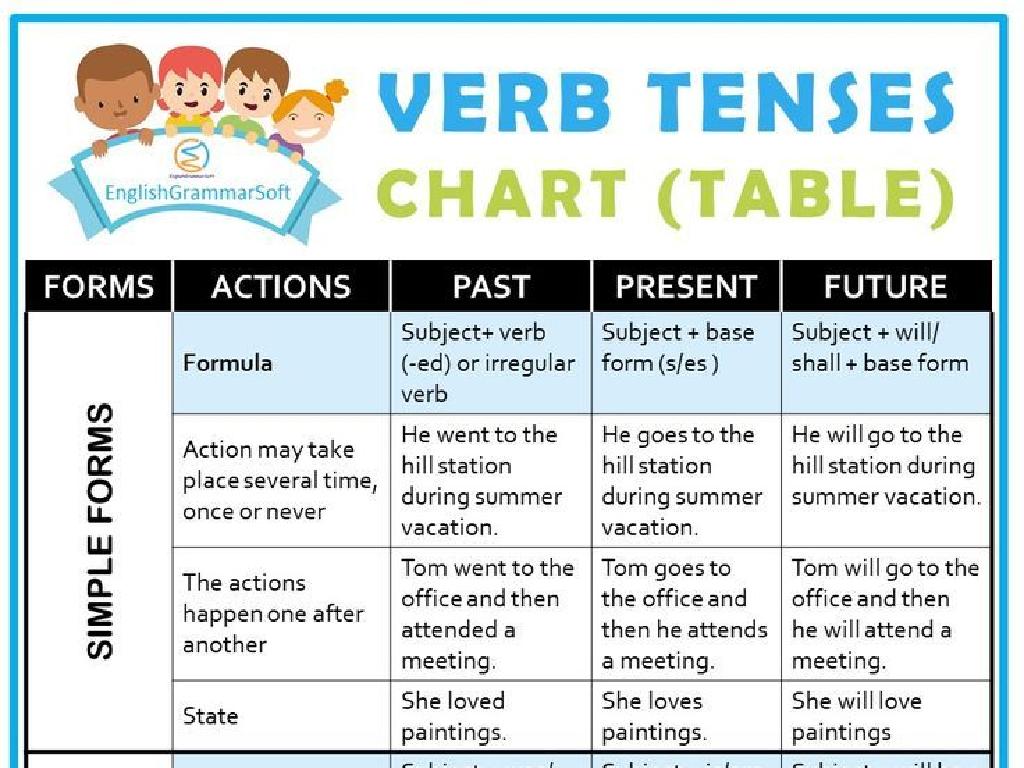Label Parts Of Rock Cycle Diagrams
Subject: Science
Grade: Fifth grade
Topic: Rocks
Please LOG IN to download the presentation. Access is available to registered users only.
View More Content
Today’s Adventure: Exploring the Rock Cycle
– Journey through the rock cycle
– Rocks constantly change form
– Heat, pressure, and time transform rocks
– Discover: Igneous, Sedimentary, Metamorphic
– Igneous form from cooling lava. Sedimentary from layers of sediment. Metamorphic from heat and pressure.
– The cycle connects all rock types
|
This slide introduces students to the concept of the rock cycle, emphasizing the dynamic nature of rock formation and transformation. Explain that rocks are not static; they undergo changes through various processes such as melting, cooling, compacting, and eroding. Highlight the three main rock types: igneous rocks forming from cooled magma or lava, sedimentary rocks from the accumulation and cementation of sediment, and metamorphic rocks from existing rocks changing due to heat and pressure. Use the rock cycle diagram to show how these types are interconnected. Encourage students to think of examples of each rock type and how they might transition from one to another in the cycle.
The Rock Cycle Explained
– Continuous rock transformation
– Rocks undergo a never-ending cycle of change
– Rocks change over time
– One type can become another, like sedimentary to metamorphic
– Key rock cycle processes
– Processes like weathering, erosion, melting, cooling, pressure
– Weathering, erosion, and more
– Examples: Weathering breaks rocks, erosion moves them
|
This slide introduces the concept of the rock cycle to fifth-grade students. It’s important to convey that the rock cycle is a continuous and natural process that describes the transformation of rocks through various geological actions. Emphasize that rocks don’t stay the same; they change forms over time due to different conditions and processes. Highlight key processes such as weathering (breaking down rocks), erosion (movement of rock particles), melting (from solid to liquid), cooling (from liquid to solid), and the application of pressure (forming new rocks). Use relatable examples like the formation of sand at the beach from weathering and erosion to help students connect with the material. Encourage students to ask questions about how rocks in their environment might have changed over time.
Types of Rocks and the Rock Cycle
– Igneous Rocks: Earth’s natural coolants
– Formed from solidified molten rock, like basalt or obsidian
– Sedimentary Rocks: Earth’s history books
– Made of compressed sand, shells, and pebbles, like sandstone or limestone
– Metamorphic Rocks: Transformed under pressure
– Created by heat and pressure, altering existing rock, like slate or marble
– Exploring the rock cycle diagram
|
This slide introduces students to the three main types of rocks and their formation processes, which are part of the rock cycle. Igneous rocks form as molten rock cools and solidifies. Examples include basalt and obsidian, which can be found in areas with volcanic activity. Sedimentary rocks are formed from the accumulation and compaction of various materials, providing a historical record of Earth’s past. Metamorphic rocks result from the transformation of existing rock types through heat and pressure without melting. Encourage students to think of the rock cycle as a natural recycling process. The diagram of the rock cycle will be explored to understand how these rock types are interconnected.
Labeling the Rock Cycle Diagram
– Identify rock cycle parts
– We’ll explore how rocks change over time.
– Connection of rock types
– How are igneous, sedimentary, and metamorphic rocks related?
– Understanding transitions
– Learn about melting, cooling, erosion, compaction, and more.
– Labeling activity in class
– Use a diagram to label each process in the rock cycle.
|
This slide introduces students to the rock cycle and its components. Begin by explaining that the rock cycle is a continuous process that describes how rocks are transformed from one type to another over time. Highlight the three main types of rocks: igneous, sedimentary, and metamorphic, and discuss how they are interconnected through various geological processes such as melting, cooling, erosion, compaction, as well as heat and pressure. Use a diagram of the rock cycle to visually demonstrate these transitions. The class activity will involve labeling a printed or digital diagram with the correct terms, reinforcing their understanding of the cycle. Provide clear examples for each transition, such as lava cooling to form igneous rock or layers of sediment being compacted into sedimentary rock. Encourage students to ask questions and share their thoughts on the rock cycle.
The Journey of a Rock: Rock Cycle Stages
– Track a rock’s cycle journey
– Sedimentary to metamorphic
– Layers of sediment compress into rock, then heat and pressure create metamorphic rock.
– Metamorphic to igneous
– Metamorphic rock melts and cools to form igneous rock.
– Cycle’s importance in geology
|
This slide aims to illustrate the dynamic process of the rock cycle by following the transformation of rocks through different stages. Students will learn how sedimentary rocks, formed from compressed sediments, can become metamorphic rocks through intense heat and pressure deep within the Earth. They will also discover how metamorphic rocks can melt and, upon cooling, solidify into igneous rocks. Emphasize the cyclical nature of this process and its significance in understanding Earth’s geology. Encourage students to think about the long timescales involved in these transformations and how they shape the planet’s surface.
Interactive Labeling: The Rock Cycle
– Label the rock cycle diagram
– Use learned terms for labeling
– Consider rock-forming processes
– How does sedimentary rock become metamorphic?
– Share your labeled diagram
|
This slide is an interactive class activity where students will apply their knowledge of the rock cycle by labeling a diagram. Provide each student with a copy of a blank rock cycle diagram. They should use the terms they’ve learned in class to fill in the parts of the cycle, such as ‘sedimentation’, ‘erosion’, ‘igneous’, ‘metamorphic’, and ‘sedimentary’. Encourage them to think about the natural processes that lead to the formation of each type of rock, such as pressure and heat transforming sedimentary rock into metamorphic rock. After completing the activity, students can share their diagrams with the class to discuss and compare their understanding. This will help reinforce their knowledge of the rock cycle and the terminology associated with it.
Class Activity: Rock Cycle Role Play
– Understand the rock cycle through role play
– Each group represents a rock cycle part
– Demonstrate your group’s process
– Explain your part’s role in rock formation
|
This interactive class activity is designed to help students understand the rock cycle by actively participating in a role play. Divide the class into small groups and assign each group a specific part of the rock cycle, such as sedimentation, erosion, melting, cooling, or pressure changes. Provide each group with a brief description of their assigned process. Students will then create a short skit or demonstration that shows how their process works and its importance in the formation of rocks. Encourage creativity and ensure that they highlight the key characteristics of their process. Possible activities could include creating a dance to represent the movement of magma, a skit about layers of sediment being compressed, or a demonstration of rocks breaking down into sediment. This hands-on approach will help students better retain the information and understand the dynamic nature of the rock cycle.
Rock Cycle Review & Questions
– Review key rock cycle points
– Discuss rock transformation
Rocks change with heat, pressure, cooling, and weathering
– Encourage questions
– Share interesting facts
Maybe a unique rock formation or a local rock type?
|
This slide aims to recap the rock cycle’s main concepts and engage students in a discussion about the transformation of rocks over time. Start by summarizing the stages of the rock cycle, including the formation of igneous, sedimentary, and metamorphic rocks. Ask students to explain how rocks can change from one type to another through processes like melting, cooling, compaction, and erosion. Encourage them to ask any questions they might have or to share any interesting observations or facts they’ve learned about rocks. This interactive session will help solidify their understanding and allow them to express their curiosity and knowledge.
Homework: The Rock Cycle Journey
– Draw a rock cycle diagram
– Label each part of the cycle
– Write a rock’s cycle story
– Imagine being a rock, transform through stages like melting, cooling, or erosion
– Share your work next class
|
This homework assignment is designed to reinforce the students’ understanding of the rock cycle by engaging them in a creative activity. They are tasked with drawing their own rock cycle diagram, which will help them visualize the process and solidify their grasp of the different stages. Additionally, writing a short story from the perspective of a rock will encourage them to think critically about the changes a rock undergoes during the cycle. This activity also promotes creativity and storytelling skills. In the next class, students will have the opportunity to present their diagrams and stories, fostering public speaking skills and peer learning.





